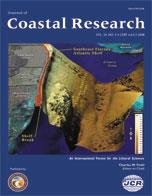Tide gauges remain the fundamental instrument used to measure water level in the coastal environment. Issues surrounding the calibration and vertical datum control of tide gauges are therefore fundamental in studies involving the determination of absolute sea level and its variation over time. Macquarie Island, located in Australian sub-Antarctic waters (54°30′ S, 158°57′ E), represents one of the few possible locations in the Southern Ocean to observe sea level using traditional tide gauge techniques. The wave and atmospheric climatology of the region, coupled with a rugged coastline, makes the operation of a modern tide gauge installation extremely difficult. To overcome many of these difficulties, researchers use an acoustic gauge operated within an inclined shaft that is drilled through a coastal rocky outcrop. The calibration requirements of the gauge are therefore problematic and require special consideration to enable the accurate calculation of mean sea level and its change over time. We present results from a novel application of a GPS-equipped buoy to achieve an in situ calibration of the tide gauge, solving for scale, vertical offset, and sea state–dependent bias parameters. The methodology provides a new, high precision technique using available instrumentation, allowing users to maximise the oceanographic and geodetic value of tide gauge observations.
How to translate text using browser tools
1 July 2008
Coastal Tide Gauge Calibration: A Case Study at Macquarie Island Using GPS Buoy Techniques
Christopher Watson,
Richard Coleman,
Roger Handsworth
ACCESS THE FULL ARTICLE

Journal of Coastal Research
Vol. 2008 • No. 244
July 2008
Vol. 2008 • No. 244
July 2008
Acoustic tide gauge
calibration methodology
GPS buoy
sea level




